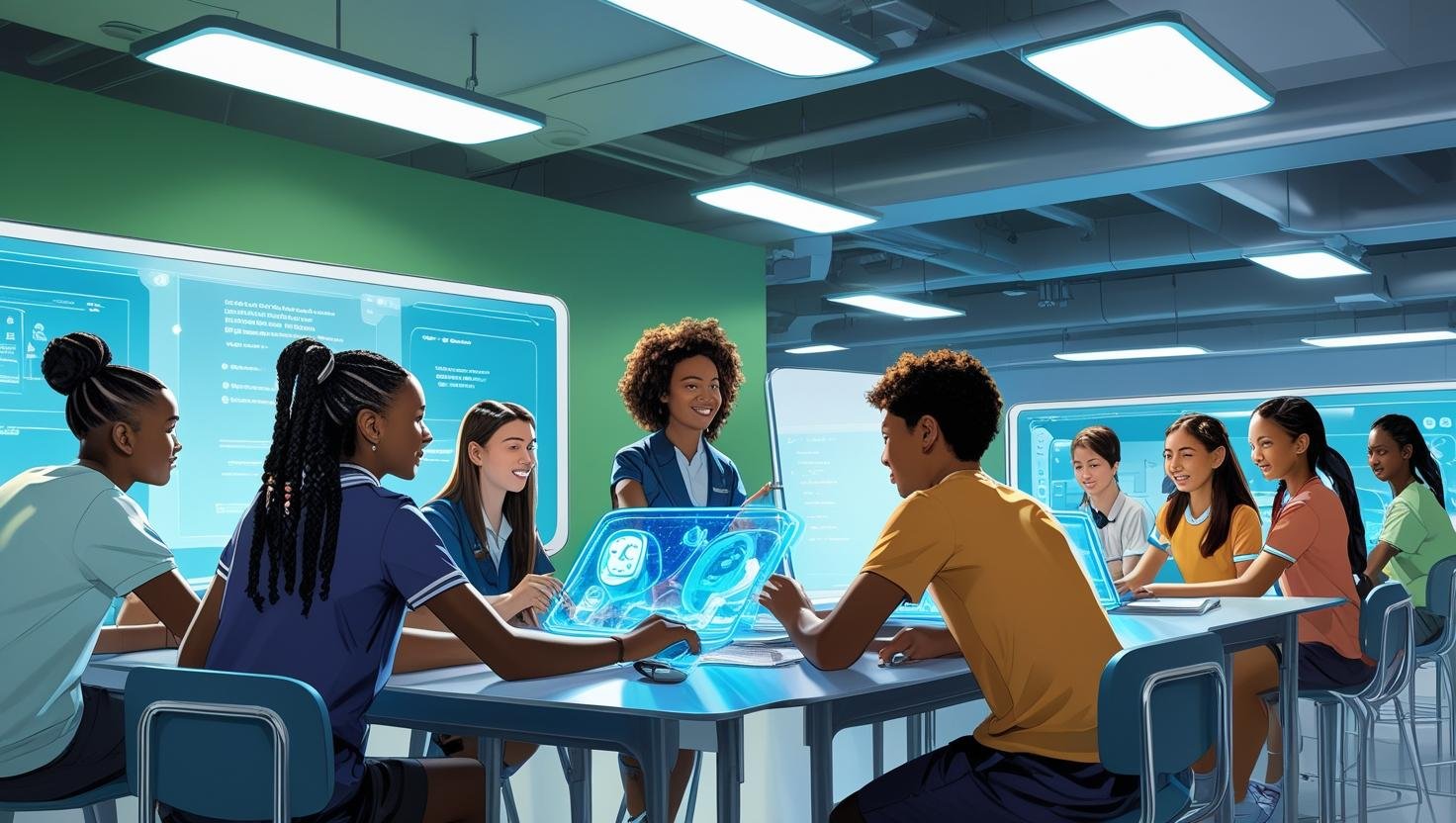How AI is Transforming Education for the Future and content creation

Education is going through a quiet revolution, one powered not by policy changes or new textbooks, but by Artificial Intelligence (AI). From personalized learning journeys to global access and creative content generation, AI is helping reimagine what education can be. Whether you’re in a high-tech classroom or learning on a smartphone in a remote village, AI is opening doors to a brighter, more inclusive future.
Let’s explore how AI, alongside open-source tools and intelligent content creation, is reshaping the way we teach and learn.
AI in Education: More Than Just Smart Tools
At its core, AI in education is about personalization. Every learner has a unique style, pace, and set of needs. AI-driven platforms are now capable of recognizing these differences, offering instant feedback, tracking progress, and even suggesting content tailored to individual learning goals.
Think of AI as a digital co-pilot for students, always present, always adapting. It doesn't just deliver lessons; it learns from students as much as they learn from it. This is the shift from passive learning to active engagement, and it's transforming classrooms, online courses, and independent study alike.
Leveling the Playing Field: Developed vs. Developing Nations
AI’s impact is felt differently depending on a country's infrastructure and resources, but the outcomes are promising across the board.
In Developed Countries
Advanced AI tools are becoming staples in schools and universities. From AI tutors that help students master complex topics to predictive analytics that help educators intervene before a student falls behind, education is becoming more precise, more engaging, and more efficient.
Educators use AI to automate administrative tasks, freeing up more time for creativity and mentorship. AI helps identify struggling students early, suggest new approaches, and track long-term development, not just academic performance, but also emotional and social learning.
In Developing Countries
Here, AI is making education accessible where it was once out of reach. Low-bandwidth apps, multilingual bots, and offline learning platforms powered by AI are helping students in remote areas learn without needing constant internet access or modern infrastructure.
AI-driven SMS tutoring, voice-based learning tools, and educational radio integrated with chatbots are changing lives. By overcoming barriers like language, location, and cost, AI is becoming a powerful equalizer.
Open Source AI: Education for the People, by the People
One of the most exciting aspects of AI in education is the rise of open-source platforms. These tools are freely available, customizable, and community-driven, ideal for schools, NGOs, and developers building educational solutions that actually fit local needs.
Projects like TensorFlow, OpenAI's Whisper (great for audio transcription), and Hugging Face's open models are already being used to create learning tools in multiple languages, support students with disabilities, or adapt to different curriculums.
Open source means that no one gets left behind. A teacher in Namibia, a coder in India, and a nonprofit in Brazil can all build something useful, together, without worrying about pricey software licenses or gatekeeping.
Revolutionizing Content Creation with AI and Kafkai
AI has also changed the game when it comes to creating content. Tools like Kafkai make it easier and faster to generate tailored material, whether you're a teacher building lesson plans or a content creator making tutorials.
This doesn’t mean replacing teachers or writers, it just gives them a creative boost. Say you need a lesson on urban farming in Swahili, or questions aligned to your country's curriculum, AI can help you build that faster, while you focus on making sure it's relevant and impactful.
Used right, tools like Kafkai support quality and speed, without losing the human touch. You’re still the creator, the AI just helps you get there quicker.
Teachers and AI: A Collaborative Force
The myth that AI will replace teachers couldn’t be further from the truth. Teachers are still the heart of education, mentors, guides, and motivators. What AI does is give them better tools to teach smarter, not harder.
Imagine a classroom where AI tracks learning progress in real time, and the teacher uses that insight to adapt lessons, offer help where needed, and keep students engaged. That’s a partnership that works.
Looking Ahead: What Comes Next?
The future of learning will be flexible, accessible, and creative, and AI is helping us get there.
- Personalized learning will become the norm.
- Open-source collaboration will fuel innovation.
- Content will be faster to produce and more relevant to different contexts.
- Lifelong learning will be available to anyone, anywhere.
This isn’t just about tech; it’s about building a fairer, more connected world where learning is for everyone.
Final Thoughts
AI in education isn’t some buzzword trend. It’s already changing lives, and not just in tech hubs or universities, but in small towns, rural schools, and community centers around the world.
Whether you’re a student exploring your passions, a teacher shaping young minds, or a developer building tools that make learning easier, this is the moment to lean in. The tools are here. The potential is massive.
Let’s use it to create something better, together.